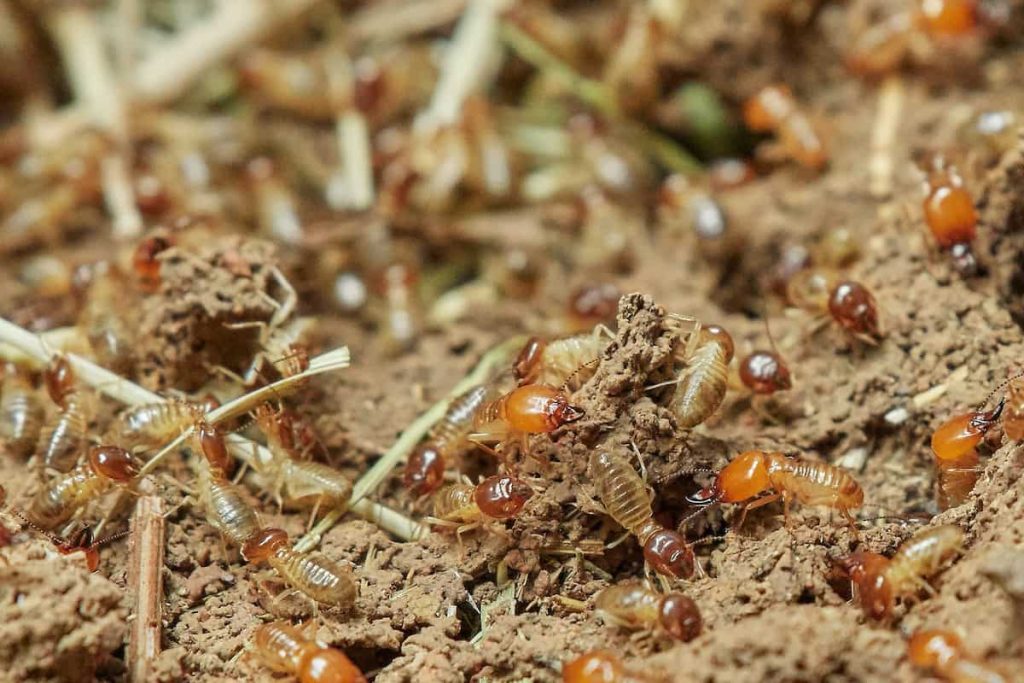Ditch the Chemicals! Natural Termite Prevention Solutions That Work
Termites are tiny, but they often pose grand problems. These small insects have the ability to consume wood and other cellulose-rich materials, causing considerable damage to homes, furniture, and even critical infrastructure. While chemical-based termite solutions are available and widely used, an increasing number of studies show the potential negative impacts on human health and natural ecosystems.
Therefore, this article aims to further delve into a more sustainable, environmentally friendly alternative–natural termite prevention measures. By providing a comprehensive understanding of these methods, we seek to encourage more informed decisions in termite management, contributing to healthy homes and a healthier environment.
The Impact of Chemical Termite Solutions on Health and Environment

Chemical substances like fipronil, imidacloprid, or permethrin are often the go-to for termite control. They are effective, no question about that, but they also have the potential to exact a heavy toll on human health and the environment.
Chronic exposure to these chemicals may lead to an array of health issues, from mild skin and eye irritations to more severe central nervous system disruptions. These issues can be particularly worrisome for individuals with existing health conditions or for young children who are more vulnerable to such impacts.
More than just health issues, these chemical solutions can disrupt the natural balance of our ecosystems. They can inadvertently harm beneficial insects, birds, and other animals, creating a ripple effect that can affect biodiversity and food chains. These chemicals may also leach into our soil and water systems, posing a dire threat to both terrestrial and aquatic life. Acknowledging these harmful environmental impacts makes the case for exploring safer alternatives.
Understanding Natural Termite Prevention Methods
Natural termite prevention is all about using non-chemical strategies to combat these destructive pests. They encompass various biological, mechanical, or botanical methods that involve minimal harm to humans and the environment.
One might introduce natural enemies of termites such as ants or beetles into the environment, thus setting up a biological control mechanism. Mechanical strategies can involve adjusting the structural makeup of homes and other buildings or making smart landscape choices that deter termites.
Botanical methods, which we describe in more detail below, can involve employing certain plants or using organic compounds to keep termites at bay.
Helpful Plants for Natural Termite Prevention

Nature is often our best defence, and termite prevention is no exception. Certain plants exhibit natural resistance against termites due to their innate chemical properties.
For instance, catnip, a plant beloved by felines worldwide, can also hold termites at bay. Nepetalactone, an essential oil present in the plant, is an effective termite deterrent. Another example is Vetiver grass, renowned for its deeply penetrating roots and inherent resistance to termite infestation.
Cultivating these anti-termite plants not only safeguards our homes but also offers additional benefits. They enhance the aesthetic appeal of a landscape, improve soil quality and offer habitat for various wildlife species. Therefore, such plants represent a clear win-win in the termite prevention scenario.
Essential Oils and Other Organic Compounds for Termite Control

Some essential oils, derived from plants, are excellent in termite prevention. Cedarwood oil, for example, interferes with termites’ pheromone signals, disorienting them and inhibiting their swarming behaviour. Termites use these chemical signals to coordinate their activity, so disrupting these can be an effective way to manage termite populations. Other oils, like clove oil and vetiver oil, can directly kill or repel termites.
Moreover, certain organic compounds, such as borates found in borax and boric acid, have proven capabilities in termite control. Being organic, they pose less harm to the environment than synthetic chemicals, but they still require some safety measures when being used. For instance, while deploying these substances, it’s crucial to ensure they are out of reach of children and pets and that they are appropriately diluted to prevent adverse effects.
Mechanical and Structural Techniques in Natural Termite Prevention
Physical barriers and modifications in structures can significantly aid termite prevention. Cleanliness and maintenance, often understated, are fundamental in this respect.
Ensuring that homes and yards are free from waste or clutter can deprive termites of possible feeding and breeding grounds. A thorough inspection and repair of potential termite entrance points, such as cracks in the structure or areas with wood-to-soil contact, can prevent invasions.
Redesigning structures to minimise wood-to-soil contact can act as a preventative measure. Creating a physical barrier between the soil and structure using sands or crushed stones can also act as a deterrent for termites, making the environment less appealing for infestation.
Conclusion
While it’s convenient to reach for chemical-based termite solutions, the associated health and environmental implications cannot be ignored. Nature offers us a host of remarkable alternatives in our fight against termites without compromising our wellness or that of the environment.
By employing these natural methods–from developing termite-resistant landscapes to keeping homes and yards clean–we can effectively manage termites. As we conclude this article, we hope to have encouraged you to consider these natural termite solution methods, proving once again, that embracing nature-centric solutions ensures healthier homes and a more sustainable environment.







